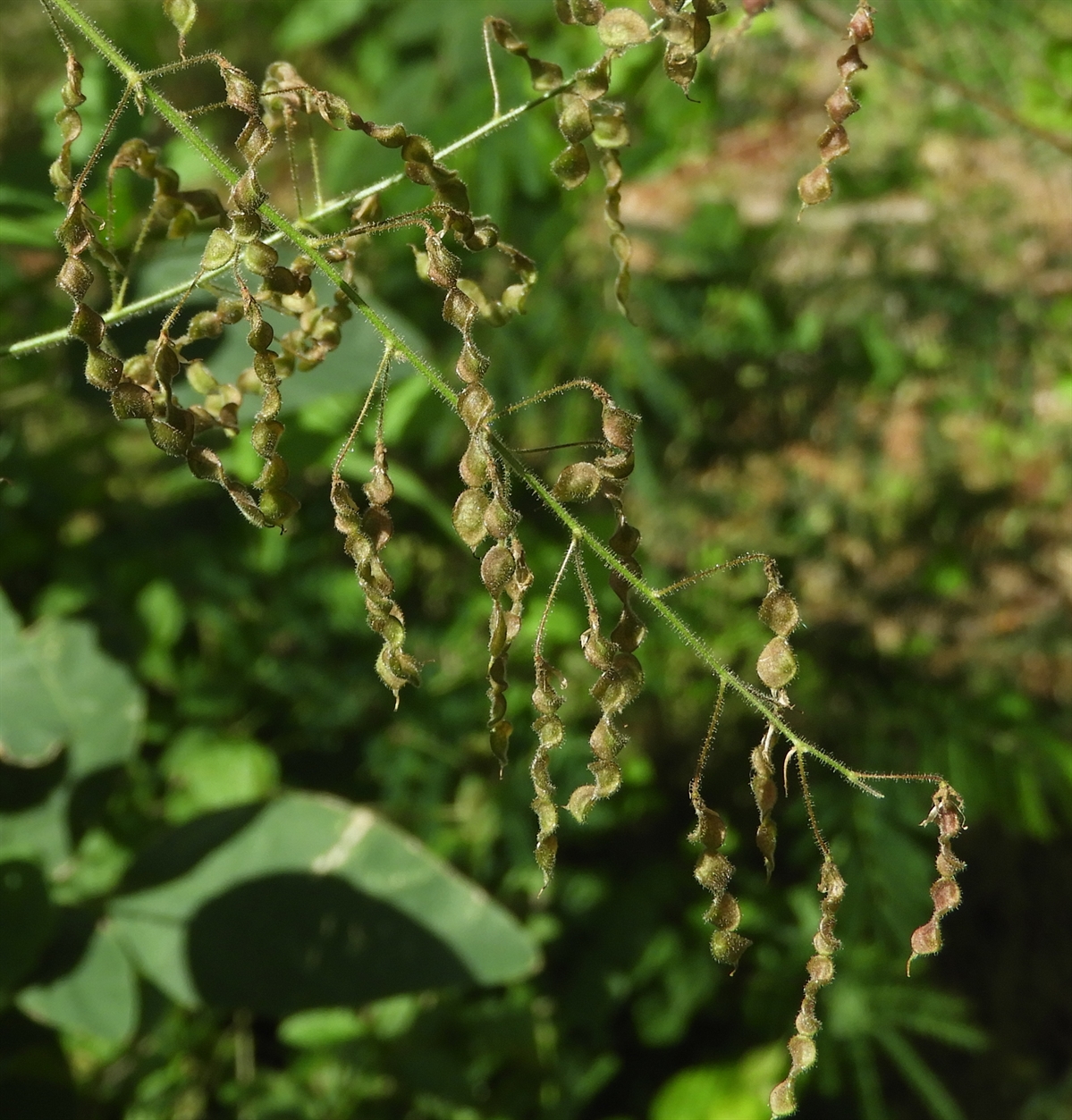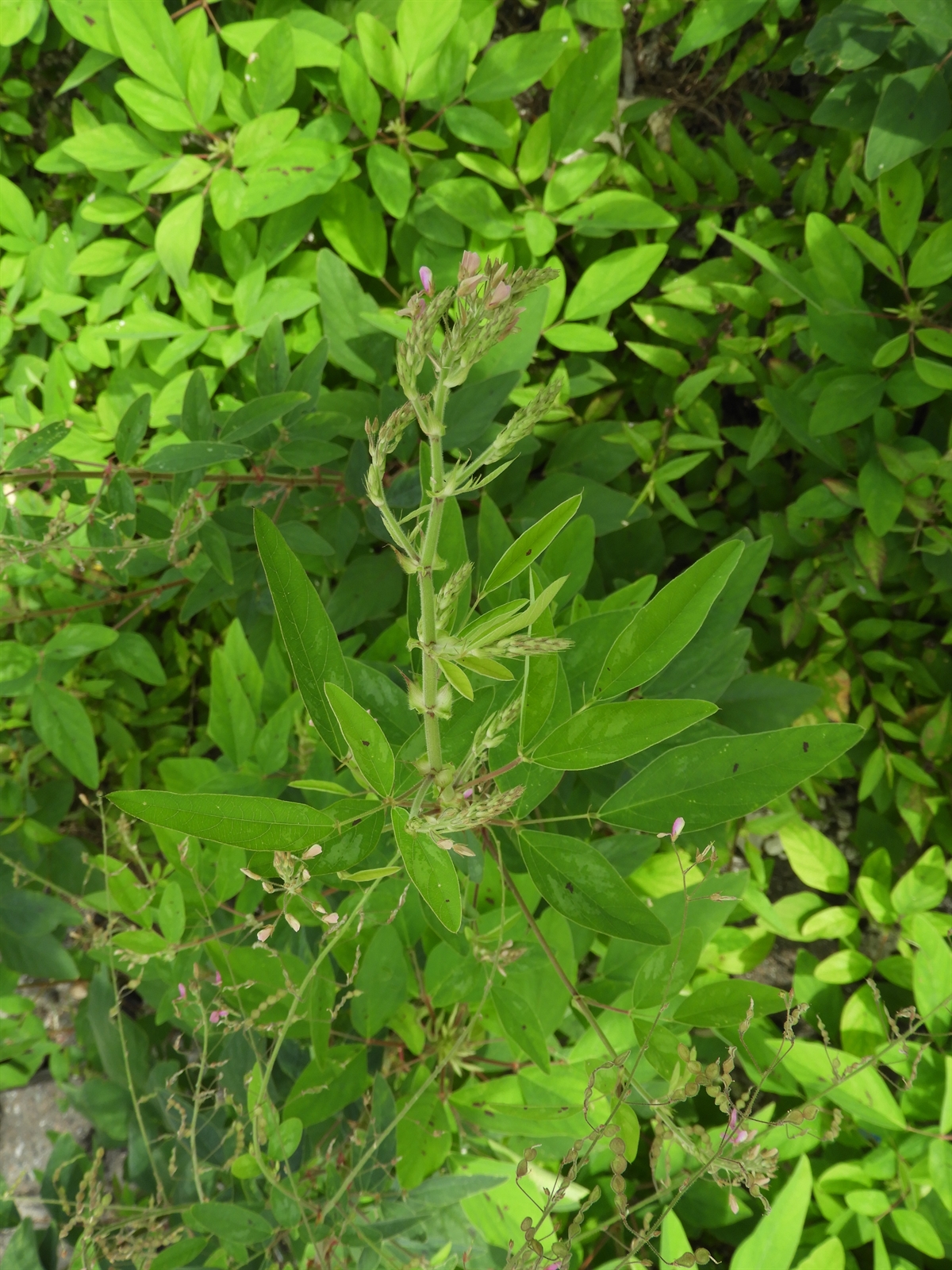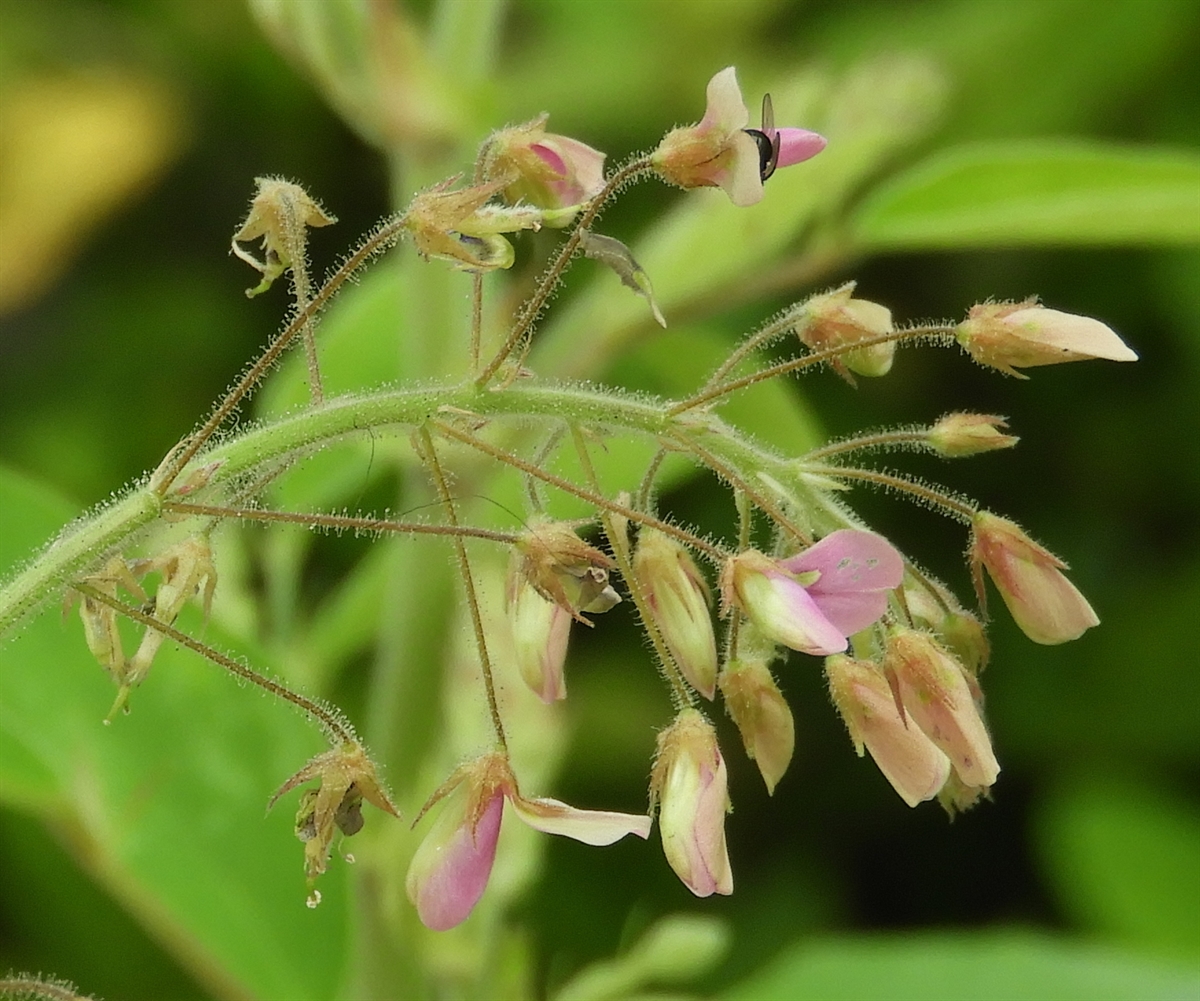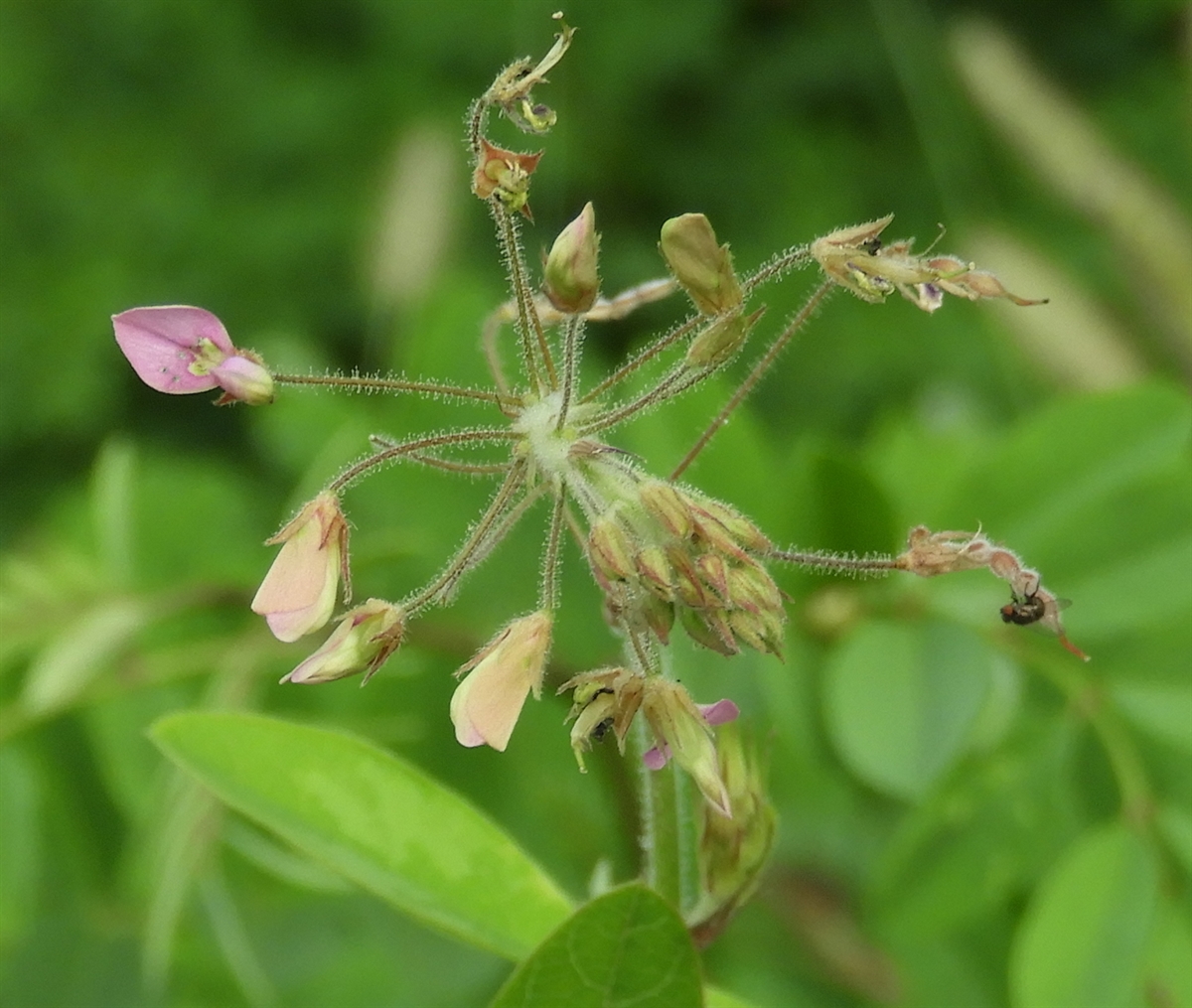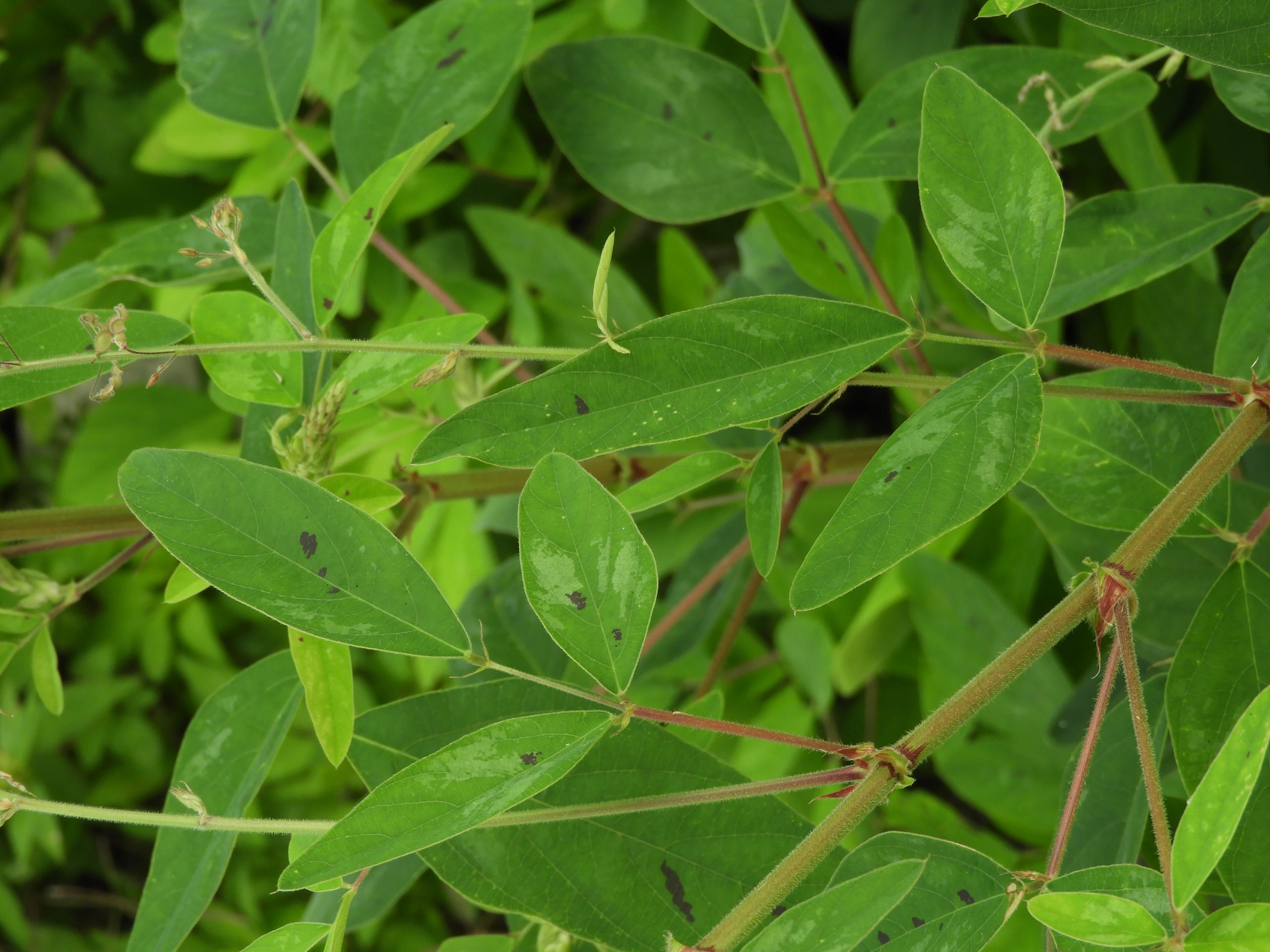Habit: Desmodium tortuosum is a perennial herb becoming woody at its base with age becoming somewhat shrub like to 2 meters in height. All vegetation is pubescent. The trifoliate leaves are arranged alternately and are to 4 cm in length. The leaflets are elliptic to rhombic, the leaflet apex obtuse and mucronate, with an entire margin. At the base of each leaflet there are two cordate stipules.
The complete, perfect, zygomorphic flowers are arranged in terminal racemes or panicles. The calyx has 5, fused, pubescent sepals. The corolla has 5 pink/purple petals. The lower 2 petals are fused into a keel and the upper is enlarged to form a standard. The superior ovary has a single locule. The fruit is a legume at maturity that is highly constricted between the seeds and is considered a loment. As the fruit matures the loments twist.
Habitat: Desmodium tortuosum grows in Human Altered environments (yards and abandoned fields), Pine Woodlands and the edges of Dry Broadleaf Evergreen Formations (coppice).
Distribution: Desmodium tortuosum occurs on the northern island groupings within the Lucayan Archipelago as well as the Caribbean region, North, Central and South America. It is widespread globally as a weed.
Medicinal/Cultural/Economic usage: Desmodium tortuosum is not known to be used medicinally in the Lucayan Archipelago
